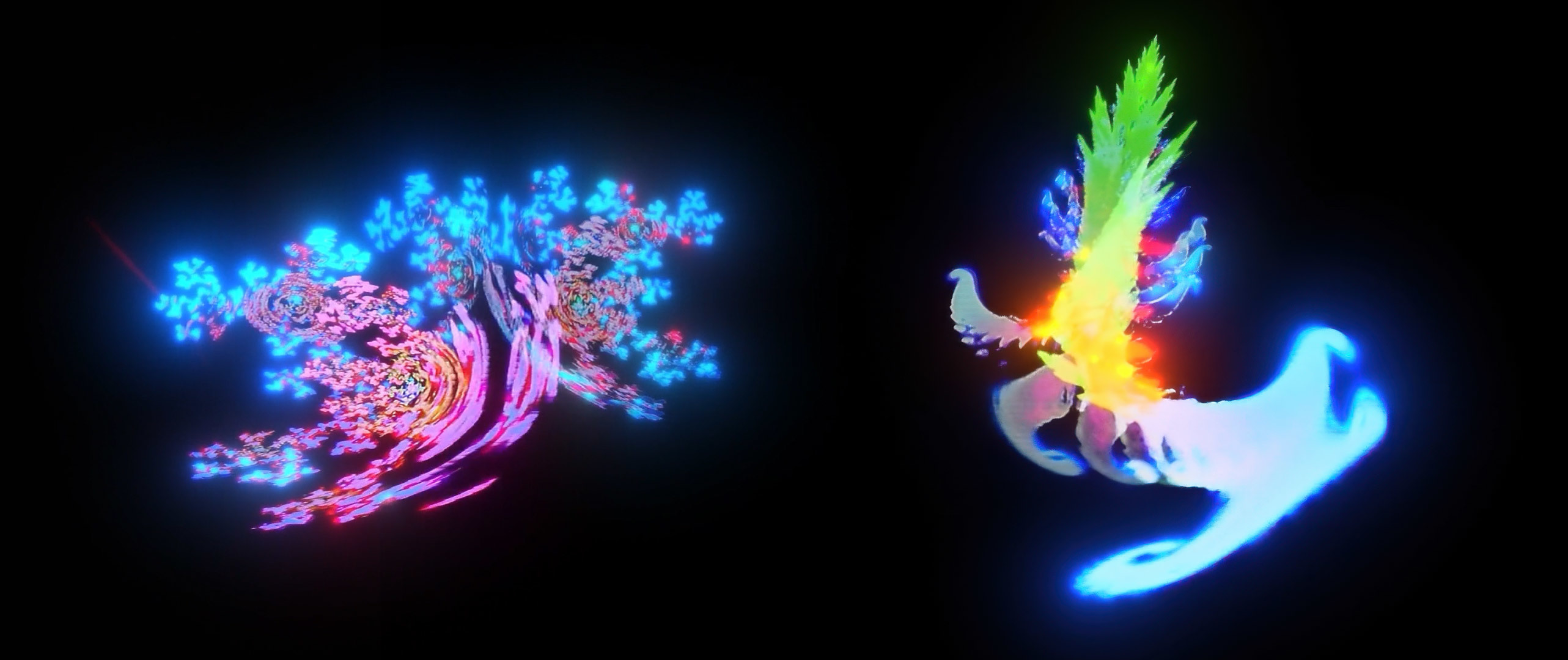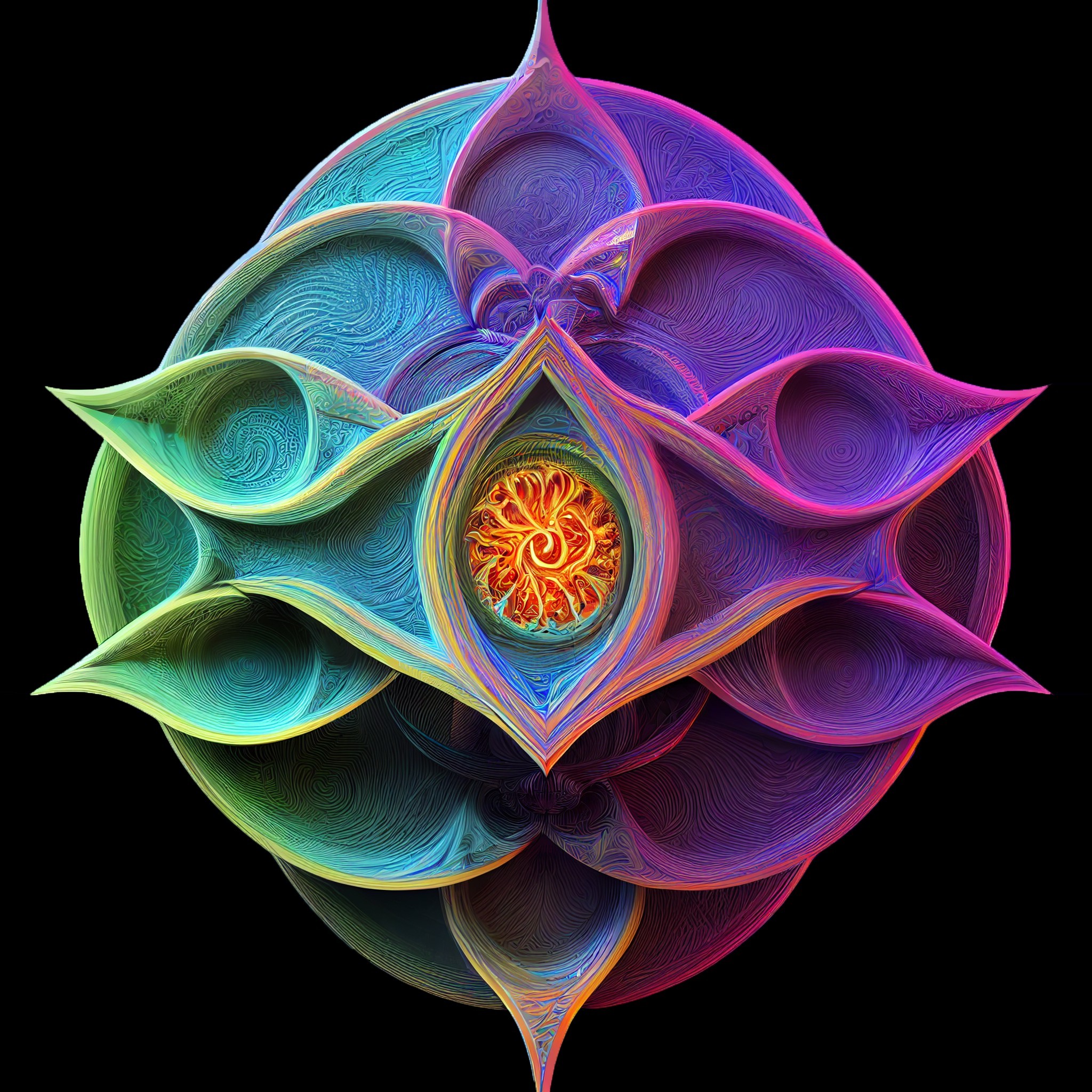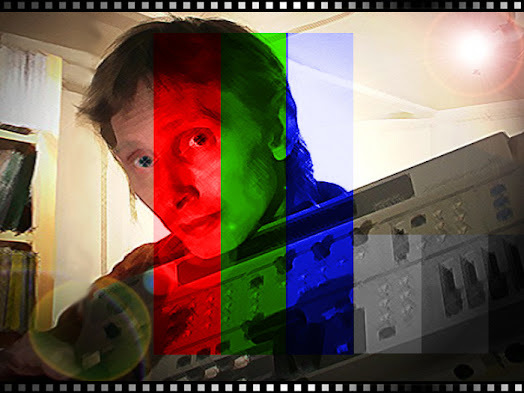Download Pack
This pack contains 676 VJ loops (102 GB)
https://www.patreon.com/posts/127928584
Behind the Scenes
Fractals visualize the infinite decision trees of our lives. Nothing else quite brings the infinite to life in the same way. But one of the challenges I've found with fractal software is that it's very difficult to animate the fractals in interesting ways. There are too many interconnected attributes and the playback speed is too slow to find just the right combination. It's difficult to actually play with fractals.
I recently stumbled across a video of the Fractal Video Feedback Kinetic Sculpture that utilizes multiple layers of video feedback to enable the real-time exploration of fractals. I was in awe of such a well implemented design which included direct physical controls. I realized that I haven't seen fractals move quite like this before and it was exactly what I've been dreaming of. I'm tempted to say that there isn't any better way to get this level of expressiveness in animated fractals. So I dove into the dedicated website and learned about the multiple versions of the device and saw even more fractal explorations. Something unique about this rig is that time is an actual aspect within the fractal system since it utilizes feedback loops and so it therefore takes a little bit of time for the visual changes to propagate down through the fractal system. And the more I watched, the more I wanted to reach out to the artist behind this device, Dave Blair.
So I chewed on the idea for a few days and then emailed Dave asking if I could hire him to record a series of custom videos. He was interested but wasn't available in the short term to record new fractal explorations, although he was willing to license some of the pre-recorded footage from his archives. I was thrilled and so I went through all of his Youtube videos and selected my favorite scenes that I'd like to experiment upon. After watching through all of his Youtube videos, I theorized that there were likely hidden treasures in the original source material that didn't make the final cut. From there Dave sent over a combination of pre-edited videos and source footage (205 gigabytes total). Huge thanks to Dave for trusting me to jam with his fractal footage.
With the fractal footage in hand, I had some clean up work to do first. When initially exploring the videos I had seen that many were at 60fps... But I didn't realize that many of them actually contained crossfaded in-betweens for every other frame. Some of the other videos had doubled-up duplicate frames. And just a few videos were true 60fps. I think it's safe to say that I'm obsessed with the buttery smooth motion of 60fps and I also know just how useful it is for VJs to slow down clips by 50% and still have 30fps playback. So I thought it was worth the trouble to fix all of the footage to be true 60fps. Hence I had the first challenge of figuring out how to extract the original frames. I was considering a few overly technical approaches when I realized that I could just speed up the footage by 200% and it would effectively skip every other frame. I just needed to be careful of whether I was stripping out the ones or the twos, which just meant deciding whether to edit off the first frame before speeding up the footage. From there I rendered out all of the fixed footage to be frame sequences. Then I imported the frame sequences into Topaz Video AI and did a x2 interpolation using the Apollo model (with "Replace Duplicate Frames" disabled) and ended up with true 60fps footage that was ready to jam with.
From here it was curation time and so I watched through all of the footage and edited the best scenes. This was a tough job since there was 7 hours of footage to go through, but it's a relatively straightforward task of just following my intuition and selecting the gem moments. But after that was done then there was the tricky job of doing another layer of curation and deciding what clips were actually worthy. And then the most difficult aspect was deciding if a clip should remain a solo scene or be combined together with other clips into a longer scene. So I decided on a strategy of pulling together any clips that were self-similar and then manually creating transitions where I matched the direction of motion between two scenes so as to hide the transition. Sometimes these transitions were simple crossfades where it felt relatively seamless and other times I used the Mesh Warp FX to hack together a smooth handoff between scenes. And since this is actual video footage, there are some production artifacts that needed to be cleaned up. You know, physical reality getting in the way. I had to scrub through all of the comps and check for any moments where the brightness of the physical LCD monitor had been tweaked on the fly and so I needed to manually key the black levels to hide these moments. Also sometimes the edges of the physical LCD monitor were visible in the footage and needed to be manually rotoscoped and masked out. There remains some occasional bumps to the camera in the footage, but after all this footage was captured on a physical device and so I think actually lends to the charm of analog. Overall this cleanup effort took a few rounds of revisiting each scene to make sure that it felt right.
Now that I had some fully finalized scenes it was time to play in After Effects. First I experimented with the FractalMapper AE plugin but the resulting visuals were too complex and the fractal-footage was too small within the generated AE-FX-fractals. I didn't expect exponential math to make things difficult when trying to put fractals inside of other fractals. Alas fractals are strange. From there I realized that I was actually interested in exploring recursive techniques, not fractal techniques, upon the fractal footage. So I experimented with the Power Droste AE plugin and got exactly what I was hoping for. I explored all sorts of ways of applying the Droste effect, such as adding different amounts of spiral strands, animating the spiral coil, rotating the spiral globally to see the opposite end, sphere interior trick, and experimenting with the Hyper Droste attributes to really go off the rails. Fractal footage within recursion, blessed be thy infinity.
Within the Power Droste FX I applied a wiggle expression onto each of the spiral strands so that I could add in some random smooth motion and break up some of the perfect symmetry. After laying out 400 experimental comps to curate from, I realized that each comp was using anywhere from 1 to 10 wiggle expressions and yet they all shared the same seed value and so the movement was the same within each of the comps. Blarg, what a slog to fix this technical hiccup! Just as I was about to manually change each seed value by hand, I was curious to see if ChatGPT could create a JSX script for After Effects to automate this work. I was amazed that it nailed it on the first try and saved me a good chunk of time. The technical ramifications for using AI in this way are huge. Adobe, are you paying attention to how AI can actually transform workflows?
I also experimented with some other techniques in AE. I always love rendering out some beautiful glow variations by using the Deep Glow FX. I do this because even though all VJ softwares can add glow effects onto clips in real-time (such as Resolume) they don't have the same level of quality since they are understandably more concerned with the real-time processing overhead. I also experimented with the Time Difference FX, set the time offset attribute to 0.1 seconds, enabled "absolute difference", and it's amazing to see the fractal footage affect itself though the use of time travel. The Time Difference FX is a way to visualize only the movement in a video and all of the static details are turned black. Really useful technique. And adding glow on top of this was the cat's pajamas and brought newly revealed details to life in the footage.
Another experiment in AE was to use the video against itself as a luma matte so that I could generate an alpha channel where it didn't exist prior. Then I added the Echo FX, set the Echo Time to -0.5 seconds, Number of Echoes to 5, and Echo Operator to "Composite In Front". This allowed me to play with the Echo Time attributes and get an intuitive feeling for how it would duplicate the footage. And since there is an alpha channel, you can see all of the duplicate footage layered on top of each other and offset in time. But I ran into another technical hiccup with the Echo FX. I needed to extend all of the comps by 150 frames to allow for the echo iterations to finish up. So I once again opened up ChatGPT and asked it to create a JSX script to automate this task. It is incredibly useful and a game changer for eliminating tedious tasks like this.
I was very curious of how slitscan FX processing would look applied to these fractals. And holy smokes, it really brings the fractals to another level! But ugh, why do I always wait until the end of a project to do the slitscan experiments. To make for the absolute smoothest slitscan FX, it requires the footage to be 240fps. So I did some initial tests to determine which footage would work nicely with the slitscan FX and then I imported this footage into Topaz Video AI and did a x4 slomo interpolation to go from 60fps to 240fps. Doing a x4 slomo interpolation can be challenging for the AI model to pull off with fast moving footage and so sometimes the output footage has some weird artifacts from the AI model making up new details. But luckily this doesn't matter when the interpolated footage is fed into the slitscan FX since each frame is only used for a tiny horizontal or vertical slice of the fully rendered frame. So the interpolated footage is really just providing extra detail for the slitscan FX to chew on. From there I applied the Time Difference FX as described above along with some Glow FX. For a good time, def throw some Hue Rotate FX onto these clips in Resolume. Fractals within fractals, warped through time, and into your eyeballs.




Discussion (2)
Those look really awesome. Maybe one day I can achieve that level :))
Regards from Milano
Marcello
Florist Italy